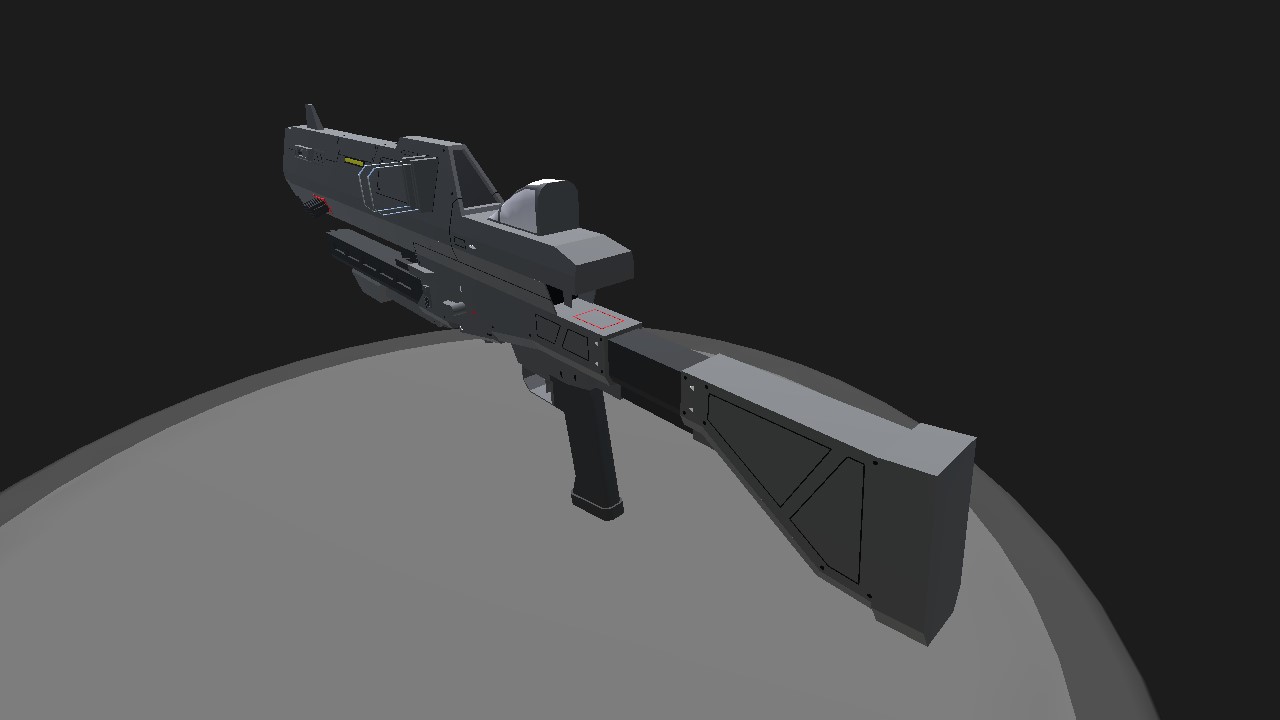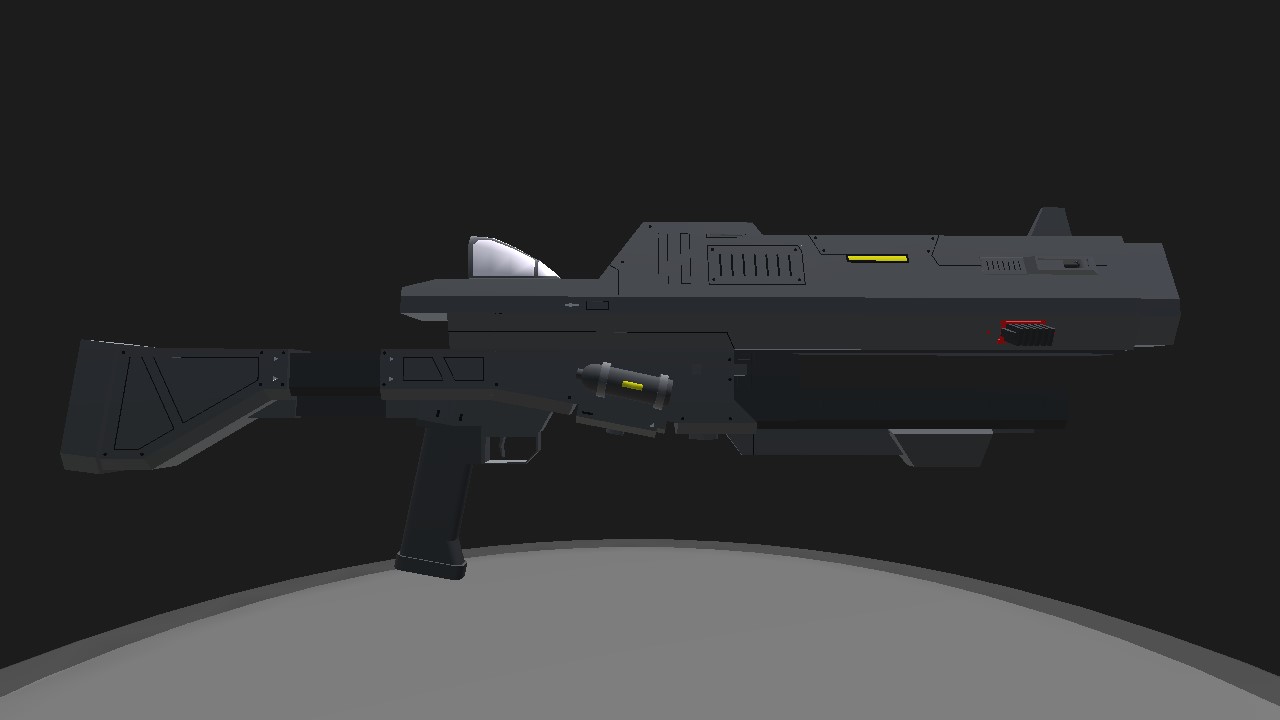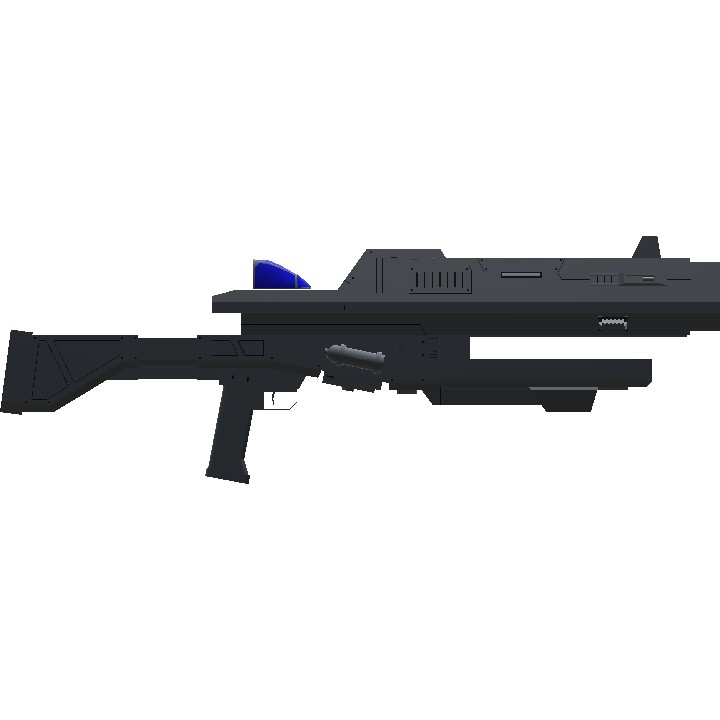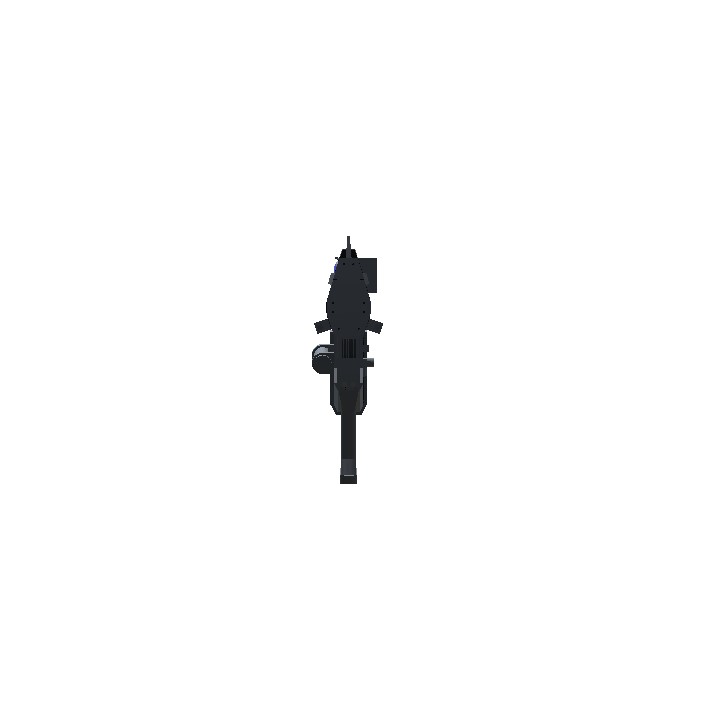insertion




SCALE ~10:1
HaJu 63
Heavy Plasma Rifle (Firearm)
The HaJu 63 is a plasma rifle. Its high power makes it suitable for destroying lightly armored targets.
! --- Key visual
--- USER MANUAL ---
CONTROLS:
AG1 - Activate Micro-DART
AG7 - Side Lighting
Stock is at maximum extension.
--- END USER MANUAL ---
The HaJu 63 is a heavy plasma rifle designed by Hayashi's Machine Laboratory, a research outsource location of ASTIND CORPORATION. It is effective against lightly armored targets, slow-moving aircraft/spacecraft, and buildings.
Information (HaJu 63):
size="2.687335,4.220098,12.22872
Type: Heavy Plasma Rifle
Started Service: 2064
Units Built: 500,000
Unit Price: $72,000
Specifications (HaJu 63):
Mass: 16 kg
Length: 1,123-1,223 mm (adjustable stock)
Width: 164 mm (includes sight and water container)
Height: 422 mm
Rate of Fire: 240/60/~1 /min
Effective Firing Range (Earth): 2,000 m
In the 50s, much of space was still unmoderated by the Peacekeeping Forces. The advent of space mining and construction activities at this time brought about new types of environments where operations could be disturbed by rival companies and piracy. To counter this new threat, working parties needed to be more heavily armed by their parent companies. In addition to arming ships more heavily, one of ASTIND CORPORATION's solutions was to provide each small group (about 10 people) with a single heavy weapon. This weapon was to provide a large amount of firepower capable of deterring a hostile force, but able to be operated and carried by only a single person.
Development of a heavy energy weapon was delegated to a specialist development team, Hayashi's Machine Laboratory. The result fulfilled the power requirements, but proved unwieldy due to its large size and high mass. It was determined to be unusable on Earth, but on Mars it would "weigh about as much as a small rocket launcher". The gun heavily favored right-side firing. It was also found that the user would have a lack of visibility over the gun, so advanced aiming technologies were packed in to compensate for this.
The prototype received various design changes before the standard production model would be confirmed. Significant changes were the addition of an attach point for gun mounts, connections for specific upgrades via proprietary ports, and software modification support. However, the height of the gun, criticized on the prototype, was not reduced, to avoid making the already-too-long gun even longer.
DESIGN
The HaJu 63 has a split-rail design. Both rails are static, they do not move during any part of use.
Each HaJu 63 rifle has three power modes - Rapid, Medium, and Heavy. The mode can be selected by rotating a switch on the left side of the gun. In front of the switch is the safety, a sliding master switch.
The weapon is powered fully by electricity. A standard battery with an external connection point, or a larger, magazine-styled battery can be fitted.
The cooling system is liquid-based and has a right-side vent and two exposed heat sinks. The heat sinks were evidence that Hayashi's Machine Laboratories had originally designed the HaJu 63 for atmospheric use. They were covered in later production versions.
The tallest part of the gun held a screen, as well as two "glass chip" sights, both displaying gun telemetry. Using two sights helped to prevent parallax error of the user.
An aiming assistant known as Micro-DART (Detection, Acquisition, Ranging, and Tracking System) was installed. This was a firearm version of the older DART system, present on larger weapons. Two antennae unfolded from the sides of the gun when the Micro-DART was activated. The system would display additional data on the sights and the user's HUD via a datalink.
Specifications
General Characteristics
- Predecessor !erf
- Successors 1 airplane(s)
- Created On Android
- Wingspan 5.4ft (1.6m)
- Length 40.1ft (12.2m)
- Height 13.8ft (4.2m)
- Empty Weight 5,950lbs (2,699kg)
- Loaded Weight 5,950lbs (2,699kg)
Performance
- Wing Loading 439,839.3lbs/ft2 (2,147,483.6kg/m2)
- Wing Area 0.0ft2 (0.0m2)
- Drag Points 4135
Parts
- Number of Parts 291
- Control Surfaces 0
- Performance Cost 844






